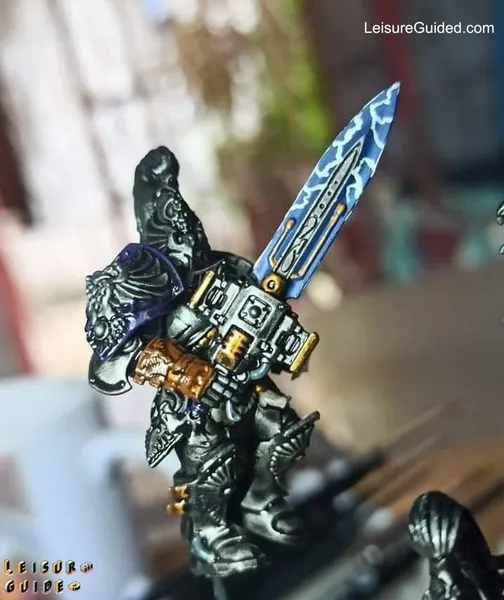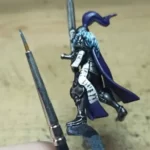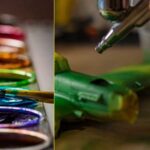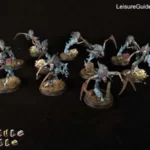paint miniatures smoothly (A Guide To Avoid Brush Lines)

Have you ever been in a situation where after painting your miniatures, you always see the brush strokes on the surface clearly, especially when painting white?
Many miniature painters have honed the skills of painting their miniatures so that it has a very smooth surface. However, it’s not as easy as you may think.
In this guide, we will offer some useful tips on how to paint miniatures smoothly so you get better results.
Is it possible to paint minis without brush strokes?
Brush strokes, marks, and lines can ruin the look of your project. When you spot these small brush strokes, you may have to start the process all over.
However, it is not impossible to paint minis without brush strokes.
The most important secret to avoiding brush strokes is learning how to position the brush and the right pressure to use.
Top tips – how to avoid brush strokes when painting miniatures and models
When brush strokes do occur, don’t fret. Sanding, vanishing, and reapplying paints could be good ways to fix the problem.
Then again, it’s better to prevent brush strokes than take after measures.
How can you avoid brush strokes when painting minis? Below are a few tips:
- Use the right paint: Basically, opaque and matte paints, like acrylics will be better to prevent brushstrokes.
- Thin your paint: If you apply the paint straight from the pot bottle, you risk leaving brush marks. So, it is always best to thin paint before painting.
- Paint in thin layers: applying paint in thick layers increases the risk of brush strokes. Instead, apply several translucent layers of paint to build color.
- Avoid brush underload and overload: brush overload and underload paves the way to thick and thin paint application that may leave brush strokes.
Make sure that the paint on the brush is not too thick or too thin that it leaves brush marks on the miniature’s surface. So, find the perfect balance and avoid too little paint or too much paint. - Use flow aids: paints that dry fast risk brush strokes. The best way to avoid this is to use flow aids or medium to increase the drying time, and allow smoother applications.
- Use the right brush: the texture of the brush may also leave brush strokes. So, choose a softer synthetic brush with good bristles to ensure a smoother application.
- Don’t press hard on the brush: pressure when running the brush through the surface of the miniature may leave brush marks. Instead, use gentle strokes and let the paint flow easily from the brush. If you notice the bristles of your brushes fan out, it means too much pressure on the bristles. So, get a new brush and use gentle strokes.
- Always cover the paint pots: sometimes, the brushes aren’t really the cause of brush strokes. It may also be because the paint has gotten too thick due to being exposed to air. Make sure to cover your dripper bottles and lots tightly after collecting paint.
- Let the paint dry properly: temperature and humidity often affect the paint dry time, causing imperfections like brush strokes. Ensure the temperature and humidity of your workspace are stable so that the paint dries properly.
- Varnish after painting: you never really know if your paint is fully cured. Even if it is, some parts of the miniature may have small brush strokes you may not see under poor lighting. Vanishing the model after it cures will prevent brush strokes from showing. When varnishing your minis you can choose between brush-on varnish, spray-can varnish, or airbrush varnish.
Watch YouTube guide on how to avoid brush strokes
We cannot rate tutorials enough. While these tips above will show theoretical ways to prevent leaving brush marks on your miniature’s surface, YouTube tutorials give you visual explanations.
A good YouTube tutorial to consider is Rob BasicModelling, “how to paint without getting brush lines.”
Consider getting an airbrush for a smooth finish
Brush painting miniatures is the most common way to paint miniatures. However, with an airbrush, you invest more in a smooth, even, and uniform finish with little effort.
Airbrushing is the easiest way to paint miniatures without brush strokes or marks due to its spray application process.
With an airbrush, all you have to do is spray paint. The only drawback to getting an airbrush is the initial cost of buying an airbrush is high.
Conclusion
Laying down paint on the surface of your miniature without brush strokes is possible. The most important thing is to figure out the right pressure and brush control and getting a smooth finish will be easy.
However, with an airbrush, you sign up for enhanced painting convenience.





